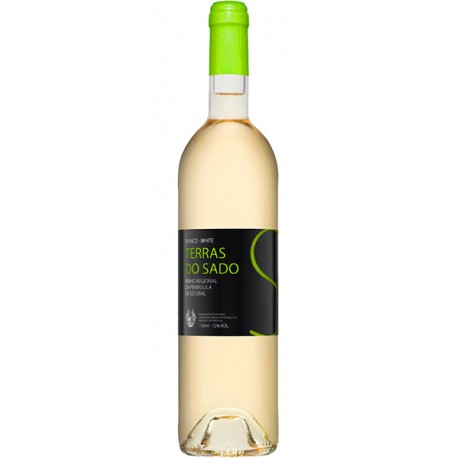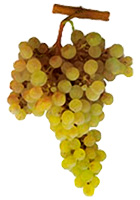 View larger
View larger
White Wine Terras do Sado Branco
SV00717
New product
Setubal Peninsula Regional white wine with citrine color, very fruity and fresh, balanced and persistent.
Enjoy it with fish and shellfish dishes.
Available in 0.75 L bottle, 0.375 L bottle and BIB 3 L
Data sheet
| Export Box: | 6 bottles with 75cl |
| Euro Pallet | 100 boxes |
More info
Setubal Peninsula Regional White Wine
Varieties: Fernao Pires and Arinto
Soil/Terroir: Sandy
Average Age of Vines: 10 anos years
Media Production: 15 hl/ha
WINEMAKING: Fermentation in concrete tanks at an average temperature of 15° C with selected yeasts
AGING: Has no aging, the wine is bottled and put into market at its youngest.
ANALYSIS
Alcohol content: 12.5% vol
Total acidity: 3.5 g/l
Total sugar: <5 g/l
SERVING SUGGESTIONS: Should be enjoyed in its youth, at 10-12 º C accompanying fish and shellfish.
Organoleptic Characterization
Visual Appearance: Citrine color.
Appearance olfactory: Very fruity and fresh.
Appearance taste: Balanced and persistent.
Awards:
- Gold – CVR Setubal
- Best Buy Revista de Vinhos
- Bronze Tambuladeira , Portuguese Sommmeliers Association 2014
- Best Buy, Guia Popular de Vinhos 2014
The Grapes
 Fernao Pires
Fernao Pires
Fernao Pires is one of the most widely used Portuguese white grape varietals in the country, its versatility, precocity and richness of aromatic compounds are what make it so popular.
After the Moscatel de Setubal, it is the most widely planted grape in the Setubal Peninsula
It is used in single-varietal wines and blends, having good results in the production of sparkling, fortified, as well as late harvest wines.
Its aromatic profile exhibits tropical fruit, lemon, lime, orange, tilia, rose and other lemony herbs.
 Arinto
Arinto
One of the oldest and most traditional Portuguese grape varietals, Arinto is characterized by its elevated natural acidity, conferring acidity, structure and excellent aging potential in wines. Because of this, it is often used in blended wines in which it imparts freshness, minerality and longevity; gaining elegance and complexity as it evolves.
Arinto is also often used in the production of sparkling wines and is the third most planted grape varietal in the Setubal Peninsula.
In the nose, it exudes notes of mineral, green apple, lemon and lime.
The Region
The Setúbal Peninsula is a unique region, whose wines are as generous and balanced as the region that sees them born.
Mother Nature was magnanimous and refined: from with the two peninsulas, “drawn” by the two largest estuaries in Portugal, was born a region rich in biodiversity and fish and shellfish with both natural and protected areas.
The framing by the Atlantic Ocean and the Tagus and Sado River estuaries, combined with a deep Mediterranean influence and geological formation provide a unique set of characteristics for wine production.
The Setúbal Peninsula also has one of the oldest denominations in Portugal - the region of Moscatel de Setúbal, whose demarcation was begun in 1907 and completed and confirmed in 1908.
The Setúbal DO (Denomination of Origin) region is geographically bounded by the municipalities of Setúbal, Palmela, Montijo and the village of Castelo in the municipality of Sesimbra.
This "terroir", which is the cradle of the Moscatel de Setúbal is unique: the joint annual rainfall of 550-750 milliliters and the 2,200 hours of sunshine poured over the sandy and clay – limestone soils is all seasoned with a handful of Atlantic breeze.





